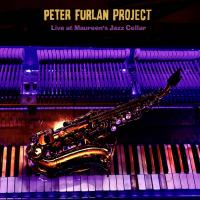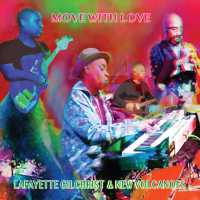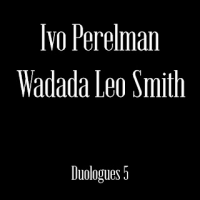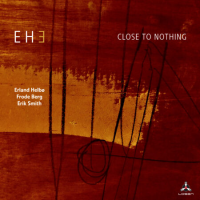Home » Jazz Articles » Album Review » Steve Lehman & Orchestre National de Jazz: Ex Machina
Steve Lehman & Orchestre National de Jazz: Ex Machina
This recording and the compositions from Lehman and Frédéric Maurin, the artistic director of the Orchestre National de JazzJ), may leave one wondering which parts are human constructions and which are generated by Artificial Intelligence (AI). That is because the recording makes use of real-time interactive electronics developed at IRCAM (Institut de Coordination Acoustique Musique). AI improvisations percolate through the music, both in rhythm and meter. Maurin's "39" finds Lehman soloing over a deluge of computer effects which blend in with a small ensemble. Parsing the pieces, human or AI, can be a challenge here. Lehman's "Chimera" opens with a duet between vibraphonist Chris Dingman and his replicant percussive counterpart. How does this ghost in a machine operate? Maybe only someone with an advance degree in software modeling could understand. Nonetheless, the sounds are very identifiable as Steve Lehman music. His "Ode to AkLaff" (for Pheeroan AkLaff) opens with what might be best described as computer generated whale songs in duo with Lehman's alto saxophone. That is, a real-time improvisation in response to Lehman's horn. Think about this for a moment.
The recording is infused with sounds generated from this software interwoven and interacting with an entire orchestra as in Maurin's "Le Seuil (Part 1)" and "Le Seuil (Part 2)." The AI on no account detracts from the performances; it does, in fact, add substance to each composition. There are plenty of excellent soloes to be found in each track. Besides Lehman, considerable space is provided for Dingman, trumpeter Jonathan Finlayson and individual members of the ONJ to solo, improvise, and interact with some very responsive AI software.
Track Listing
39: Los Angeles Imaginary; Camera; Alchimie; Ode To Aklaff; Jeux D'Anches; Les Treize Soleils; Speed--Freeze (Part 1); Speed--Freeze (Part 2); Le Seuil (Part 1); Le Seuil (Part 2).
Personnel
Additional Instrumentation
Steve Lehman; electronics; Frédéric Maurin - direction, electronics ; Fanny Ménégoz: flute, alto flute, piccolo; Catherine Delaunay: clarinet, basset horn; Julien Soro - tenor saxophone, clarinet; Fabien Debellefontaine: baritone saxophone, clarinet, flute; Fabien Norbert: trumpet, flugelhorn; Daniel Zimmermann: trombone; Christiane Bopp: trombone; Fanny Meteier: tuba; Bruno Ruder : piano, synthesizer; Stéphan Caracci: vibraphone, marimba, glockenspiel, percussion, synthesizer; Rafaël Koerner: drums; Sarah Murcia: double bass; Jérôme Nika: generative electronics creation & artistic collaboration; Dionysios Papanikolaou: IRCAM electronics.
Album information
Title: Ex Machina | Year Released: 2024 | Record Label: Pi Recodings
Tags
About Steve Lehman & Orchestre National de Jazz
Instrument: Band / ensemble / orchestra
PREVIOUS / NEXT
Support All About Jazz
 All About Jazz has been a pillar of jazz since 1995, championing it as an art form and, more importantly, supporting the musicians who make it. Our enduring commitment has made "AAJ" one of the most culturally important websites of its kind, read by hundreds of thousands of fans, musicians and industry figures every month.
All About Jazz has been a pillar of jazz since 1995, championing it as an art form and, more importantly, supporting the musicians who make it. Our enduring commitment has made "AAJ" one of the most culturally important websites of its kind, read by hundreds of thousands of fans, musicians and industry figures every month.
























